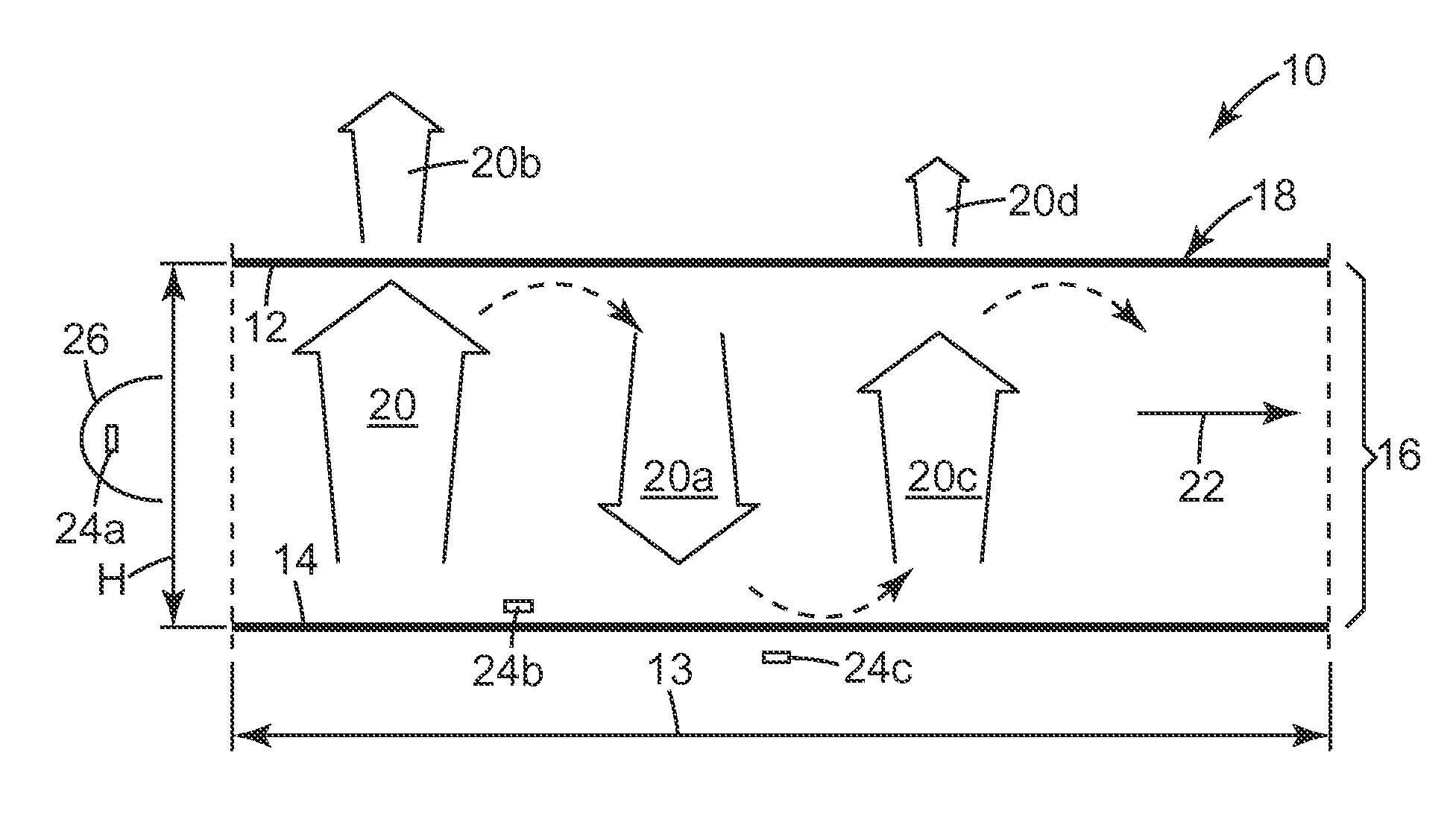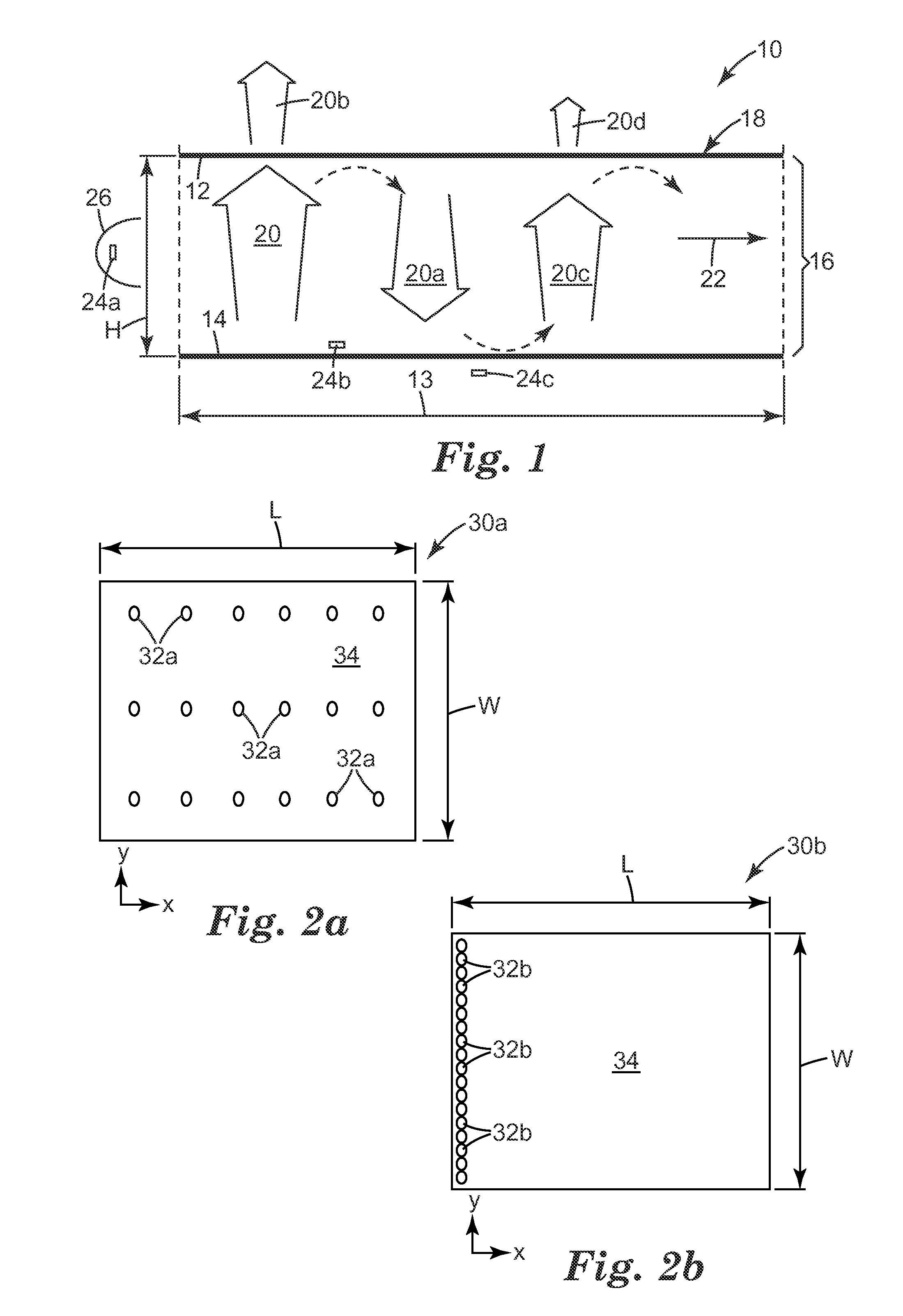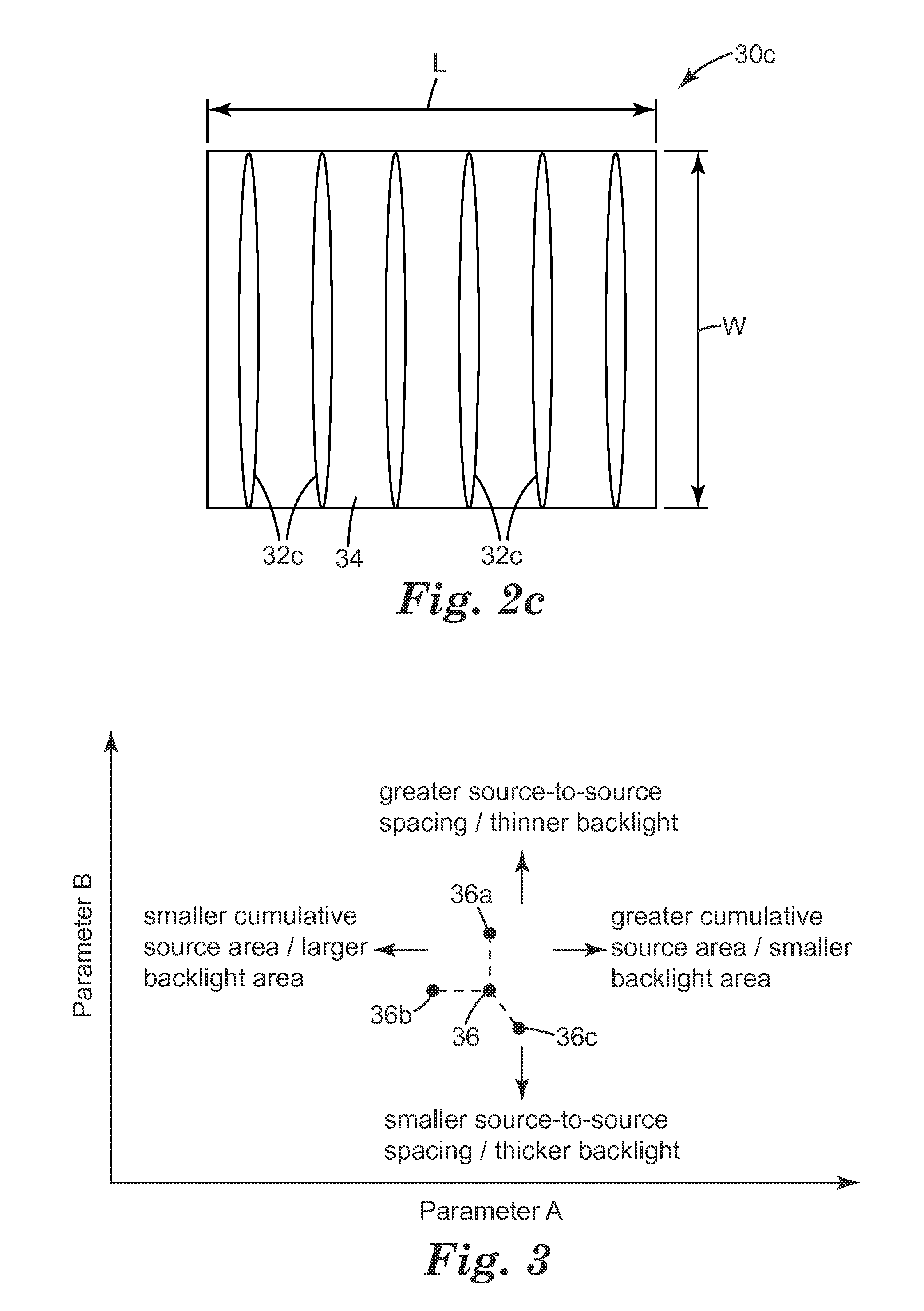Thin hollow backlights with beneficial design characteristics
a technology of design characteristics and backlights, applied in static indicating devices, lighting and heating apparatuses, instruments, etc., can solve the problem of only modest reduction of brightness uniformity over the output area of such a backlight, and achieve the effect of small collective source area ratio and minimal loss of light sources
- Summary
- Abstract
- Description
- Claims
- Application Information
AI Technical Summary
Benefits of technology
Problems solved by technology
Method used
Image
Examples
Embodiment Construction
[0034]It would be beneficial for next generation backlights to combine some or all of the following characteristics while providing a brightness and spatial uniformity that is adequate for the intended application: thin profile; design simplicity, such as a minimal number of optical components and a minimal number of sources, and convenient source layout; low weight; no use of or need for film components having substantial spatial non-uniformities from one position in the backlight to another (e.g., no significant gradation); compatibility with LED sources, as well as other small area, high brightness sources such as solid state laser sources; insensitivity to problems associated with color variability among LED sources that are all nominally the same color; to the extent possible, insensitivity to the burnout or other failure of a subset of LED sources; and the elimination or reduction of at least some of the limitations and drawbacks mentioned in the Background section above.
[0035...
PUM
 Login to View More
Login to View More Abstract
Description
Claims
Application Information
 Login to View More
Login to View More - R&D
- Intellectual Property
- Life Sciences
- Materials
- Tech Scout
- Unparalleled Data Quality
- Higher Quality Content
- 60% Fewer Hallucinations
Browse by: Latest US Patents, China's latest patents, Technical Efficacy Thesaurus, Application Domain, Technology Topic, Popular Technical Reports.
© 2025 PatSnap. All rights reserved.Legal|Privacy policy|Modern Slavery Act Transparency Statement|Sitemap|About US| Contact US: help@patsnap.com



